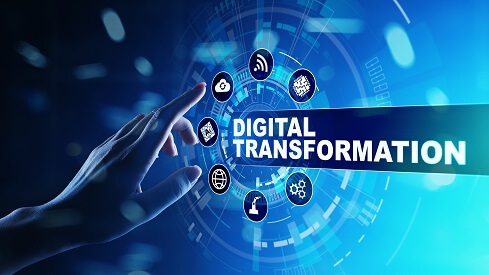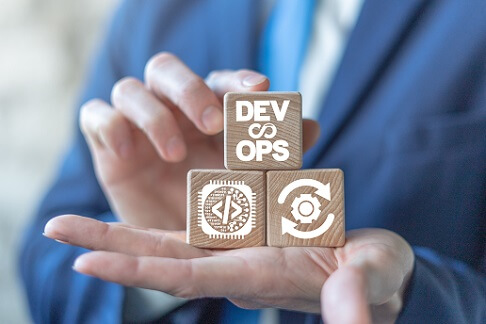The European startups hacking your brain better than Elon Musk’s Neuralink

Musk may have put a top-notch hardware implant in a pig — but he didn’t
mention plans for clinical trials on humans during the event earlier this
year, which some expected. BIOS, however, is about to embark on human trials
next year. The startup aims to treat diseases, for which we don’t currently
have effective drugs, by rewiring the brain. Part of the problem with
conditions such as heart failure, arthritis, diabetes and Crohn’s disease is
that the signals between the brain and diseased organs are failing. By fixing
this could dramatically improve the health and wellbeing of patients. But
being able to understand the complex neural codes that connect the brain with
organs — and to rewire them — is more complex than what Neuralink has been
able to show so far. “We are a bit like Linux if Elon Musk is Microsoft,” the
cofounder Emil Hewage tells Sifted. Like Neuralink, BIOS has developed its own
implant but is focusing on the data that is extracted from it more instead of
making the hardware less clunky. The company was founded by the computer
neuroscientist Hewage and the bioengineer Oliver Armitage in Cambridge in 2015
as a way to commercialise all the science that had been achieved in the field
in the last 20 years.
'Act of War' Clause Could Nix Cyber Insurance Payouts
To some degree, insurers are making the problem worse. In many ransomware
attacks, insurers determine that paying the ransom is the least expensive way
for their policyholders to recover. Such payouts, however, also keep extortion
rackets in business and attacking other companies. If significant and
widespread events become more common, it could have a dramatic impact on the
cyber insurance industry, says Chris Kennedy, CISO at AttackIQ, a
security-validation firm. "These black-swan events are very costly, and
insurance companies are businesses, too," he says. "If we are going to see
more and more of these black-swan events, the question is how can insurance
companies afford to underwrite these policies? Just like the beaches in
Florida or the flooding in Texas — where you can't get insurance anymore — if
ransomware continues to be as rampant as it is, cyber insurers are going to
back away from covering the damages." The impact of NotPetya on shipping giant
A.P. Moller Maersk is a prime example of the risk. The company claimed more
than $300 million in damages when the NotPetya worm shut down systems across
the company's offices. However, the most significant threat to Maersk's
business was that the worm infected and seemingly wiped all of the company's
150-plus domain controllers.
Should Your Enterprise Pick Angular, React or Blazor?

Aside from differences in the languages themselves, there’s also the
development environment to consider. It used to be that .NET developers
generally used Visual Studio, and anyone building frontend apps with something
like React would use a different tool. These days tools like Visual Studio
Code have successfully brought the various camps together to varying degrees.
Saying that, if your team is comfortable and familiar with one particular set
of tools, it may make sense to keep them there. It’s no small undertaking to
switch from one coding environment to another. Over time we tend to get used
to the tools/configurations we use all day every day: Shortcuts, extensions,
themes all help to keep us on track. It’s not an impossible mountain to climb,
to switch from one tool or editor to another, but doing so is likely to slow
everything down, at least in the short term. If IDEs and text editors are an
important factor when it comes to development, how you get your code to
production is just as (if not more) important! Angular, React and Blazor all
have their own processes for deployment. In general, it’s a matter of running
the correct script to package up your apps before deploying them to some form
of host.
Overcoming Software Impediments Using Obstacle Boards

The initial accomplishments reaped in the use of our first Obstacle Board were
great. However, over time we learned that maintaining the same approach was
quite challenging. This particular team actually stopped using the board 3 ½
months after starting the experiment. Reflecting on this stoppage, I would
definitely consider changing a few aspects of how we used the board at that
time to help it better integrate itself as a permanent feature of our
practice, and to educate others hoping to follow in our footsteps. Firstly,
while we could see from the previous burndown illustration that the proportion
of completed to committed stories is veering towards 100%, we didn’t reach
that point within the experiment timeframe. The most likely reason for this
was that we didn’t get that initial work balance of stories to obstacles
right. Just like teams will use their prior sprint velocity, or perhaps an
average in their sprint planning activities, so too should we have tried to
better track the time taken on obstacles to adjust that ratio. Secondly, while
in this experiment we fixed the definition of an obstacle to be these data
validation issues, this proved to impact the longevity of the board usage. As
any team grows and develops over time, what causes them to slow down evolves.
If you do not revisit the causes of what slows you down regularly, you may not
think of those new blockers as obstacles.
How CIOs Can Nurture a Culture of Digital Transformation

Digital transformation projects have traditionally been grounded in the
adoption of new business technologies that promise to unlock innovation by
streamlining projects and enhancing workflows, but they typically work from
the top down in a broad vision. This type of innovation is incapable of
keeping up with drastically changing business needs, nor can it compete with
today’s rapidly evolving digital landscape where every executive leader is
working overtime to stay ahead of market volatility. Those at the top
must focus their attention on high-level initiatives that grow and unite the
business. This means that business leaders must shift away from a
one-dimensional approach to digital transformation in favor of a modern,
hybrid model -- one that engages workers on the frontlines of the business to
collaboratively identify lapses in business processes and develop innovative
solutions. These are the folks that are closest to the actual work and are
best positioned to identify and remediate the problems they face day-to-day.
The value these workers can bring to innovation initiatives can be
ground-breaking for the business, and in most companies, this potential
remains largely untapped.
How Agile Coaching plays a role in unlocking the Future of Work
Now is the time to make empiricism new again. Slow down, bring our community
back to three pillars at the heart of agility: ... Transparency - Continuous
attention to revealing the system around us, and not the defined processes and
procedures. Specific focus and attention to revealing the human and
relationship systems within teams and organizations and how they work together
to create or impede the delivery of value; Inspection - Two perspectives
on inspection are needed for the transition to the future. The first starts
with self - how each individual approaches their own personal development
& professionalism. Second, systemic development & professionalism -
how teams, communities, and cultures collectively pursue mission-driven work.
Inquiry should balance ones that are deep and exploratory with others guided
by the pursuit of outcome-oriented ways for creating value with customers and
constituents. Adaptation - The cycle to break with adaptation is
change-for-change-sake. There must be a courageous dismantling of
self-limiting beliefs, engrained patterns of behavior, and historical
non-value-add metrics. Dismantling these creates space to adapt based on the
results of inspection, experimentation, and evaluation of evidence that
indicates where and how adjustments should be made.
What is Neuralink?

Neuralink is an ambitious neurotechnology company that’s aiming to upgrade
nature’s most complex organ – the human brain. Founded by serial entrepreneur
Elon Musk, it hopes to surgically implant tiny devices deep inside the skull,
offering the potential to treat brain disorders and other medical problems,
and give us the power to interact with and control machines using our minds.
The idea currently falls quite firmly in the realm of sci-fi and is either
utopian or dystopian, depending on who you talk to. Musk refers to it as a
“Fitbit in your skull, with tiny wires”, but this is no easy install. The
company would need to insert 3,072 electrodes connected to 96 thin, flexible
threads into your brain. ... The human brain has 86 billion neurons, which
send and receive information through electric signals via synapses. With
Neuralink, each individual thread of the device will be connected in the
brain, allowing it to monitor the activity of 1,000 brain neurons. Although
that sounds like a small sample, amplified signals are recorded and
interpreted as digital instructions, and information is sent back to the brain
to stimulate electrical spikes. Data in the prototypes has been transmitted
via a wired USB-C connection but the goal has been to create a wireless
system.
Mitre ATT&CK: How it has evolved and grown

Despite its gaining popularity, as the data from the joint study found, users
continue to have difficulty learning to use the framework. There are two
fundamental challenges, Sarukkai said. "A lot of tools didn't have the ability
to support it. Enterprises who don't have these products end up doing it
manually which they means they aren't fully able to adopt the Mitre ATT&CK
framework because they are getting inundated with instances and because they
don't have the tooling they need to be effective. That's the biggest reason,"
he said. The second problem, Sarukkai said, is that organizations want to use
ATT&CK to automate remediation and help alleviate the workload on SOC
analysts. But such use requires a level of maturity with ATT&CK, and the
report found that just 19% of respondents have reached that maturity level.
The biggest challenge, according to Pennington, is people being overwhelmed.
"We recognize that. ATT&CK for Enterprise, the main knowledge base people
are using, is 156 high-level behaviors as of right now. And so, if an
organization is going in and trying to just go across and immediately in one
pass figure out what their stance is against 156 behaviors, they'll be
overwhelmed, and we've seen that," he said.
AIOps, DevSecOps, and Beyond: Exploring New Facets of DevOps

Pushed by the pandemic, many businesses have no choice but to rely on their
digital channels, he says. As organizations focus on building up reliability
and put preventive measures in place, the effort becomes data intensive,
Gilfix says. “People have to sift through logs that come from applications and
network devices. They have to set up monitoring and alert tools,” he says.
“They have to leverage all these various forms of data to figure out where the
application is working, and they have to have mature abilities to build a
development staging pipeline.” That means testing the applications, simulating
real world needs, and moving change management into product, Gilfix says.
Finding skilled professionals capable of performing those tasks quickly with
large-scale applications is a challenge. This is where AIOps, the application
of artificial intelligence to make sense of that data for DevOps, comes into
play, he says. “Issues can be resolved quicker,” Gilfix says. “You can
pinpoint similar issues in your applications and fix them preventatively. You
can leverage AI to ensure, in a decentralized manner, you’re compliant and
manage risk.” AI can also be used to avoid errors downstream in the
development process.
Data Privacy in a Globally Competitive Reality

At a global level, there is a spectrum of consumer data privacy regulations. On
one end, the European Union's GDPR gives individuals complete control over their
personal data and who can access it. Enterprises processing such data must have
strict technical and organizational measures in place to ensure data protection
principles such as de-identification practices or full anonymization. When data
is being processed, it must be done for one of six lawful reasons and the data
subject is able to revoke permission at any time. Although strict data
management protects consumers' privacy, from an artificial intelligence point of
view it inadvertently may limit access to critical data elements or reduce the
size of the data set which ultimately could affect the ability to create
accurate algorithms. Additionally, limited-size data sets can greatly impact
progress on research developments. On the other end of the spectrum is China.
With the largest population of internet users in the world, organizations can
collect an enormous amount of data on customers that can be used in enterprise
AI solutions. Because there are fewer restrictions about who can view and
leverage personal data, Chinese data scientists are in many cases able to use
the country's massive data sets as a competitive advantage in developing new AI
algorithms.
Quote for the day:
"Confident and courageous leaders have no problems pointing out their own weaknesses and ignorance." -- Thom S. Rainer
No comments:
Post a Comment